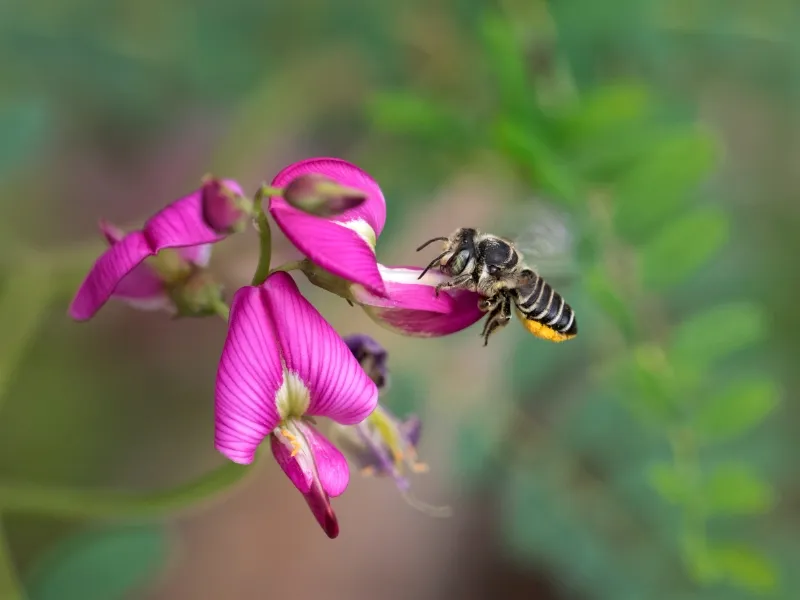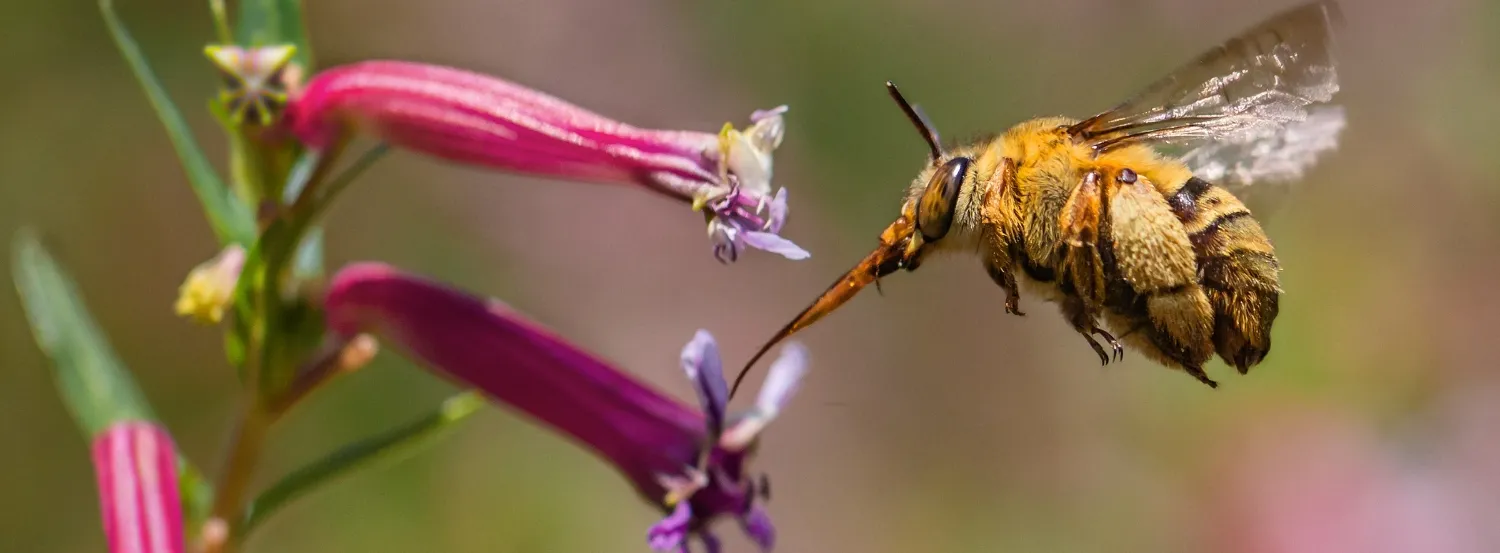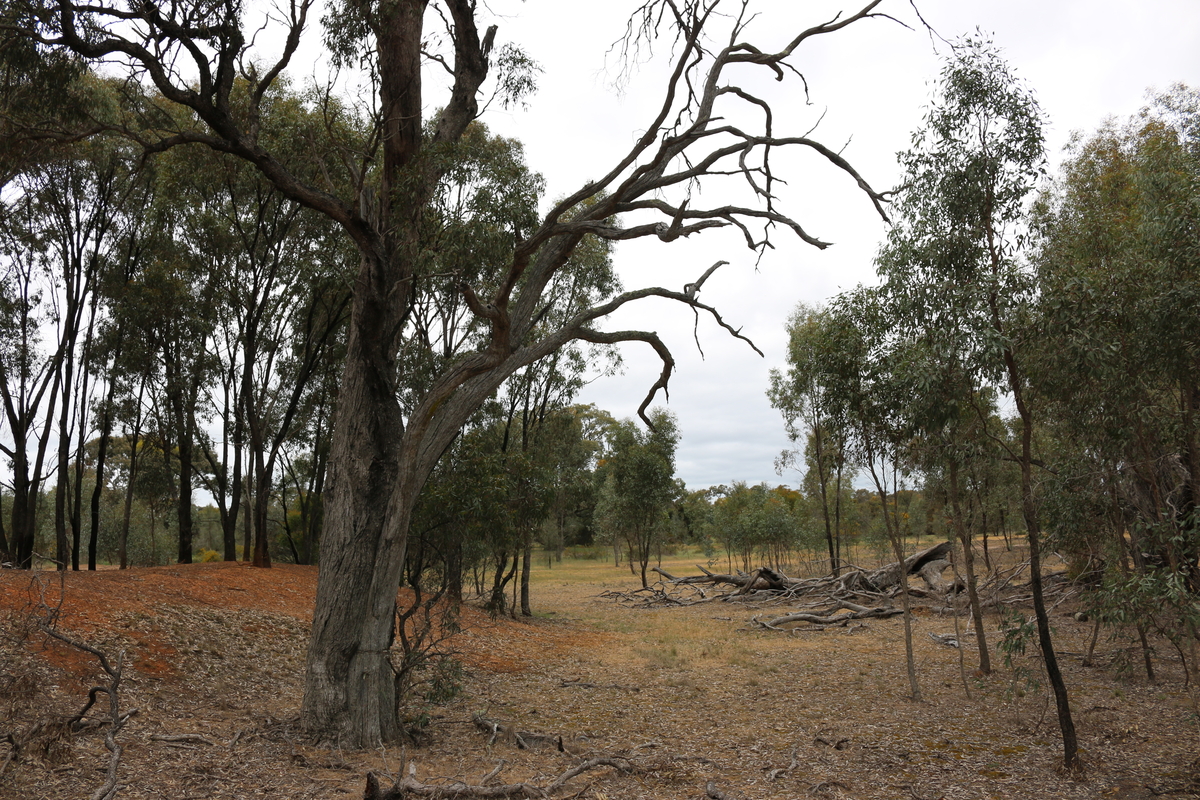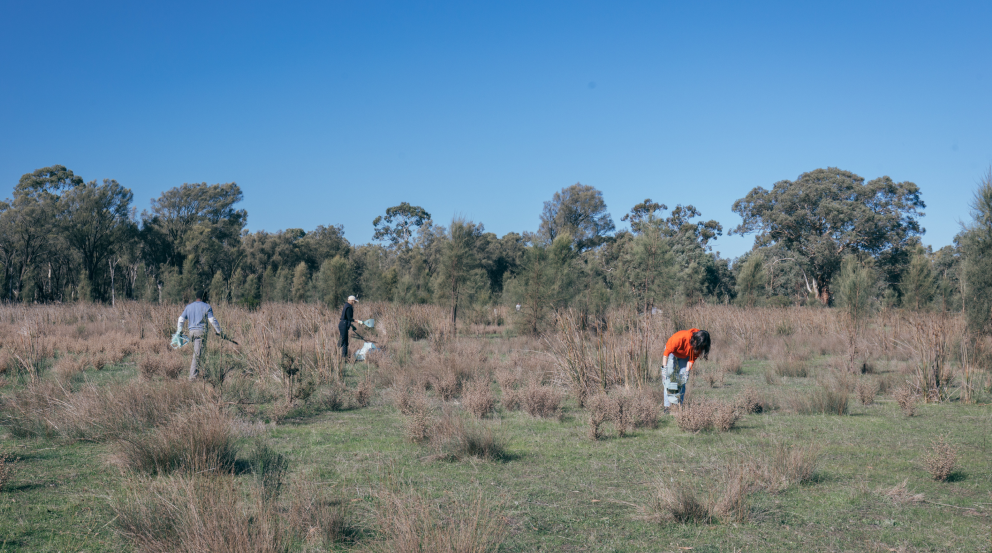You might not give much thought to native bees. But these busy insects have helped to shape the country’s ecosystem over millions of years of pollination. Here’s how you can keep them thriving for a million years more.
Did you know that Australia is home to around 2000 species of native bees? These incredible insects have been keeping the country full of fruits, vegetables and flowers for millions of years, thanks to their pollination and cross-pollination skills. Without bees – native or otherwise – the abundance of fresh produce we see in our supermarkets, greengrocers and gardens, not to mention our natural ecosystem, would be, well, just about non-existent.
But these busy little bees (who are extremely reluctant to sting, unlike European honeybees) are under threat. The widespread use of pesticides and insecticides, commonly used to kill pests in gardens and crops, are wiping out our bee population, as is construction, land clearing, and even gardening.
“As we continue to clear land for residential development, food production and industrial development, we remove essential native bee habitat,” says Megan Halcroft, PhD and native bee specialist from Hampton, New South Wales.

Fortunately, there’s something you can do to help your local native bee community: plant a garden they’ll love. “About 30% of our native bees nest and reproduce in rotting wood, dead hollow stems and old borer holes,” Megan explains. “By providing suitable burrows, which mimic these natural substrates, we can help existing populations reproduce.”
Most native bees are ‘generalist’ foragers, which means they collect pollen and nectar from a variety of different flowers. But after 125 million years of evolution, their preference is for native plants. “Native bees have evolved with our native plants for millions of years,” says Megan. “This makes native bees the best pollinators of the more complex flowers.”
To keep bees happy and well fed, Megan suggests planting things like pea flowers, banksias, grevilleas, native daisies and tea trees, either directly into the garden, or in pots if you’re short on space. Flowers with long, tube-like petal structures, like Correa and native rosemary, are the flora of choice for bees with long tongues, like the Blue-banded and Teddy Bear bees. “Native bees drive biodiversity, as their pollination services enable native plant reproduction,” Megan says.

Then there are buzz pollinators. These are the bees that commonly nest on the ground, and have developed the unusual (and impressive) ability to sonicate flowers in order to release pollen. If you’re not up on your bee terminology, sonication is when the bee buzzes into the flower, grabs the anther ( the part that produces pollen) with her feet, wraps her abdomen around it, and shakes like crazy. (“Imagine holding a salt shaker upside down and vibrating it hundreds of times per second!” Megan laughs.) This is something honeybees can’t do, and without this special skill, native plants like flax lilies wouldn’t be able to reproduce.
Another bonus to filling your garden with native plants is that they’ll attract beneficial insects like predators (which sounds bad, but hear us out). Predators –including ladybirds, praying mantises and spiders – eat garden pests like aphids, caterpillars and katydids, which helps protect both native flora and your veggie garden. It’s the circle of life – and it’s happening right outside your window.
Keen to create a bee-friendly haven in your backyard? Ask your local nursery about what native plants are suited best to your area and aim for a variety of different blooms. Then sit back and wait for the bees.
Photo Credit: Erica Siegel - https://www.ericasiegel-photography.com








